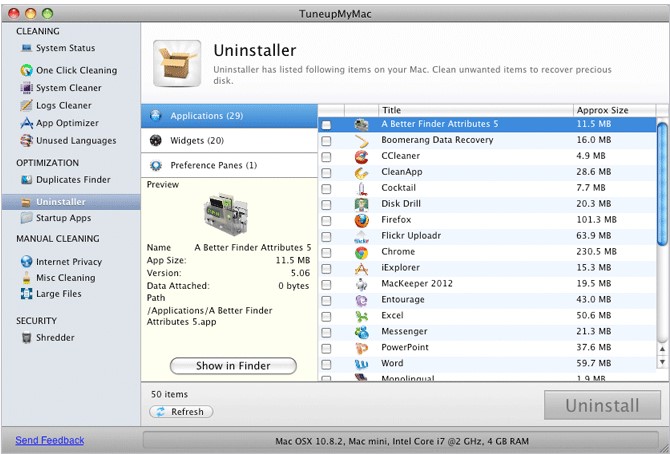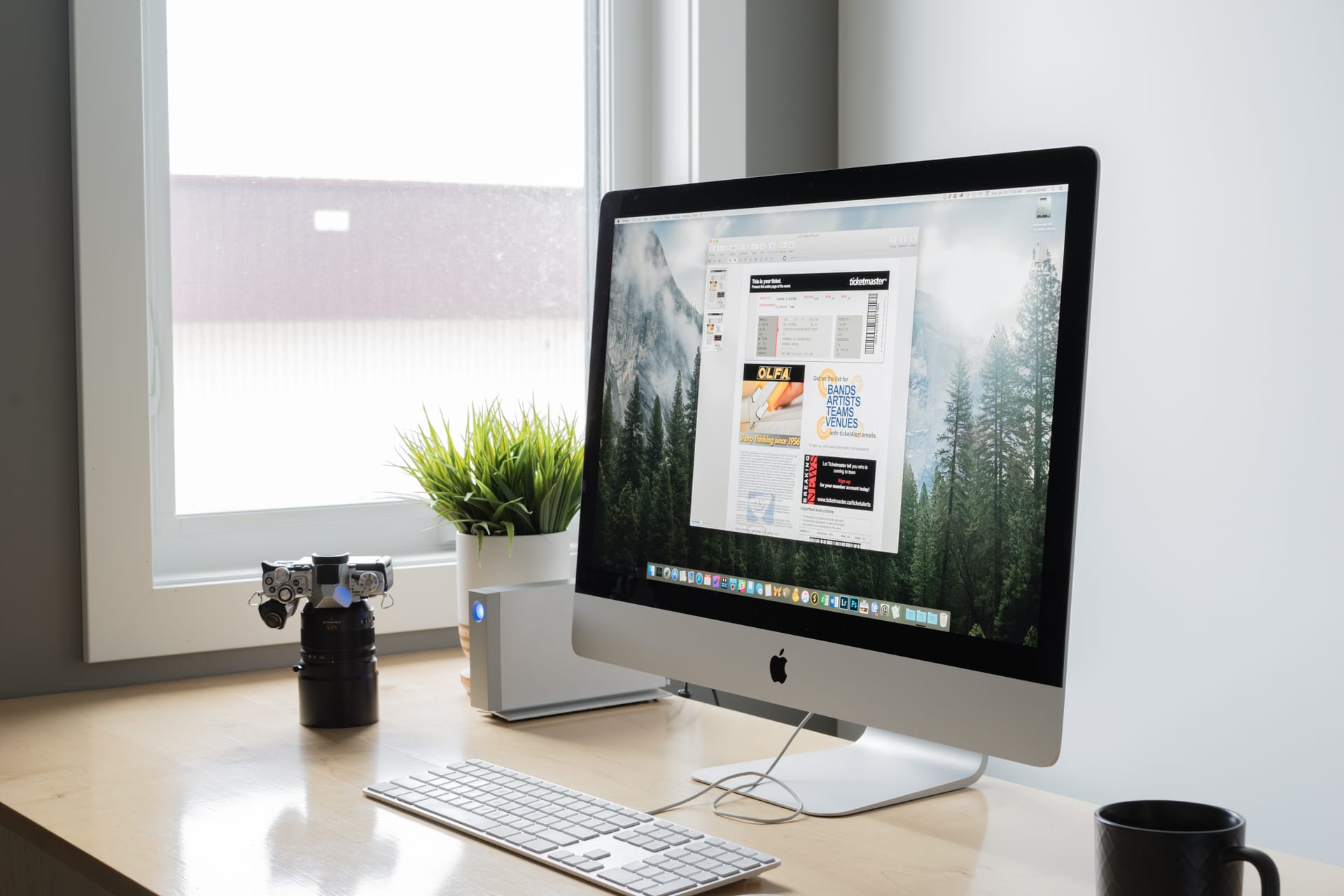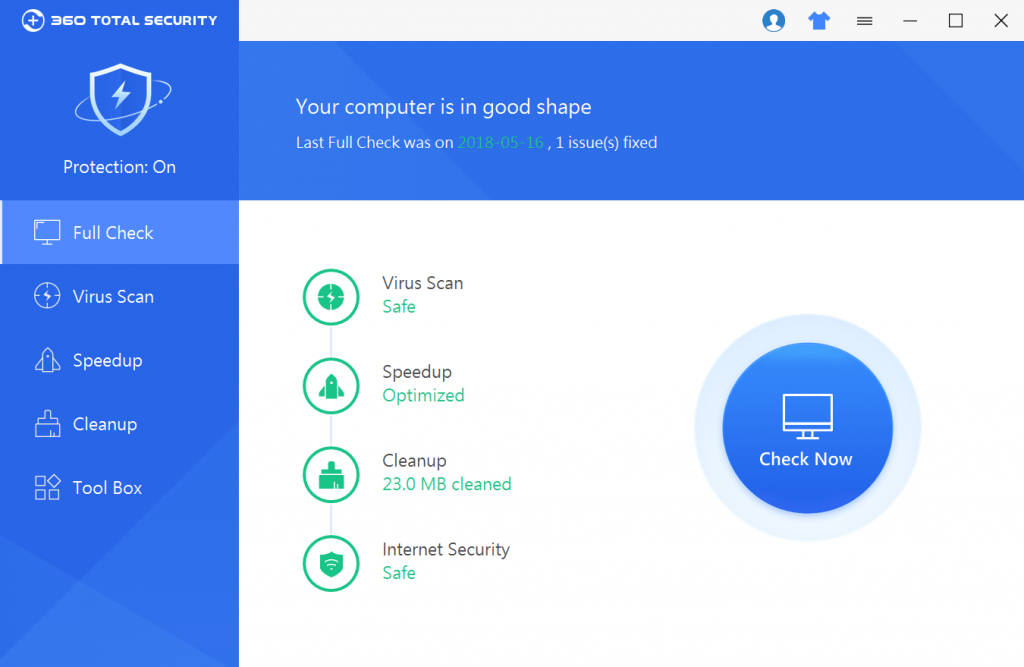Oct 31, 2019 Uninstalling apps on Mac is less of a hassle than cleaning out our rooms so pretty much the steps we provided is simple and fast. If you want to learn more tips to make your Mac faster, you can learn from here. IMyMac Mac Cleaner is an effective, efficient, safe, and secure program that can easily help you boost your Mac performance. RELATED: How to Reset Any Mac App to Its Default Settings. If you absolutely must remove those files (say, if you want to reset an app to its default settings), you can use a handy app called AppCleaner to fully uninstall an app, along with all its extra files. Just launch AppCleaner, search for an application in its main window, and click on.
Whether you’re trying to clear up hard drive space or you just want to get rid of an unused app, uninstalling software is a fairly routine task.
Luckily for Mac users, the uninstallation process is a lot simpler on macOS than it is on other platforms. In fact, it’s literally drag-and-drop simple. There’s no “Uninstall Programs” menu in Control Panel like there is in Windows.
Having said that, there are a couple of ways you can actually go about uninstalling apps. Here’s what you need to know.
Uninstall Mac Apps Via Finder
The traditional method for uninstalling apps is to use Finder. If you’re running a particularly old version of macOS (or OS X), this is the method you’ll use.
- Open a Finder window.
- Click on the Applications folder.
- Select the app you want to uninstall.
- Right-click the application.
- In the menu that pops up, click on Move to Trash.
Alternatively, you can simply drag the application directly to the Trash icon. (It’ll be in the bottom-right corner of the Mac taskbar. You may need to hover over the bottom of the display to get it to show.)
Once the app is sent to Trash, there is one more step you’ll need to take to completely rid your computer of it.
This is also the last time to reinstall an app you’ve recently deleted if you changed your mind. Just drag an app from Trash back to the Applications folder. Or right-click on the app in the Trash folder and click Put Back.
But to permanently delete apps from your computer, simply right-click the Trash icon in the bottom-right corner of the menu bar. Then, click on Empty Trash. Depending on how much data is in your Trash can, this could take a moment.
Uninstall Mac Apps from Launchpad
The last method is incredibly simple, but OS X Lion and newer versions of the Mac operating system have an easier method.
Is Uninstall Mac App Safe Mode
First, you’ll need to open Launchpad. There are two ways to go about this.
- Click the Launchpad icon in the taskbar. It’s shaped like a gray rocket, or six squares.
- Alternatively, you can use a Multi-Touch gesture. Simply pinch your thumb and three fingers together to display Launchpad.
From here, the process is similar to iOS.
- Click and hold the icon of the app you’d like to uninstall.
- Wait until the app icon begins to jiggle.
- When it does, click the circular black X icon that appears next to it.
- You’ll be a prompt asking you to confirm. Click on Delete.

It’s worth noting that the Launchpad method won’t work on every app. Typically, it’ll only show up on apps that you’ve downloaded from the Mac App Store.
Similarly, unlike iOS, you won’t be able to delete native macOS applications like Safari, Mail or Photos.
Using an Uninstaller for Mac Apps
While these methods will cover the vast majority of apps you interact with on a daily basis, there is another method for certain applications.
Although uncommon, some apps will have their own dedicated uninstallers. This is especially true for app suites like Microsoft Office or Adobe Creative Cloud.
Basically, these app suites come with an uninstaller app because they tend to install other software or support apps. If you install Photoshop on your Mac, for example, Adobe might install a suite of other apps like Adobe Bridge or Adobe Content Viewer along with it.
Is Uninstall Mac App Safe Iphone
To do away with an app suite, you can either hunt down each individual app and delete them separately. Or, you can use the uninstaller app that came with the suite.
Generally, it’s recommended that you use the uninstaller. The official uninstall process will typically clean up app data and other miscellaneous files that might otherwise be left behind.
How to Clean Up Leftover Files
Though this isn’t true across the board, some apps will “leave behind” random bits of data or other files. For the most part, there’s really no harm in this. But these leftover files can take up a bit of space on your drive.
If you’re particularly space-conscious, you might want to go through the process of cleaning them up.
The quickest way to do so is to use a third-party utility app that will automatically locate and delete that leftover data, preference files and caches. An app like AppCleaner is a great choice.
Use AppCleaner to Clean Up Files
AppCleaner is free and incredibly simple to use. Once you download and install it, follow these steps before you uninstall the actual app.
- Open AppCleaner.
- Drag an application to the AppCleaner window.
- It’ll scan and find all associated files.
- Be sure to “check” the files and folders that you want AppCleaner to delete.
- Click the Remove button.
- You’ll usually need to login with an administrator account to authenticate.
Once you do, AppCleaner will move the app and its associated files to the Trash.
AppCleaner also has a “SmartDelete” option that’s located in its Preferences menu. This will save you from having to checkmark each file or folder before AppCleaner removes them.
As with the other methods explained above, you’ll need to empty the Trash before the apps (and their files) are actually deleted from your hard drive.
Manually Clean Up Leftover Files
If you don’t want to use a third-party option, you’ll need to dig around and find those files yourself. It’s not the hardest thing to do, but it requires a bit of know-how.
You will find these leftover bits of data in your Library folder. Here’s how to get to it.
- Open a Finder window.
- Click on the Go menu in the top menu bar.
- Hold down the Option key.
- You’ll see a new folder pop up titled Library.
- Click on Library.
From here, it’s just a matter of searching out the individual leftover files. They might include application support files, preference files, and caches.
In the Library folder:
- Application support files will be located in the Application Support
- Preference files will be located in the Preferences
- Caches will be located in the Caches
Click on any of the above folders. Then, locate a subfolder named after the app you’ve uninstalled. Occasionally, the folder will be named after the app developer, rather than the app.
You can either delete the individual files within that subfolder, or just delete the subfolder itself.
Overview
There often comes a time when you just don’t need to keep an app around. It may be old and unsupported – or maybe you just don’t use it anymore and don’t have a need to keep it around. If that sounds like you, we’ll show you exactly how to uninstall apps on Mac.
Uninstall Mac Applications
Get the best uninstallers to delete any application on your Mac.

With macOS Catalina and later, there are plenty of great reasons to delete apps. If an app is 32-bit, it has to go. Apple made the decision to discontinue support for 32-bit binaries with macOS Catalina, and many app developers didn’t retrofit their apps to be 64-bit as Apple requested. Old 32-bit apps no longer work on macOS.
Some apps may just be unnecessary. If you have apps for managing photos or your music library, you may find the new Photos app that comes with macOS or the new Music app do a great job, so the old software you’d been using is redundant. It’s gotta go!
Whatever the case, there are quick and easy ways to delete apps from your Mac. We’ll walk you through it!
One thing to know is deleting an app isn’t the same as uninstalling it. There are two ways to delete apps, though: Finder, and Launchpad.
How to delete apps on Mac using Launchpad
In Launchpad, you can pressing and holding the app's icon to bring up the wiggly app management feature. Like iOS, app icons start to shake in-place, which allows you to move them around. Third-party apps also have a small ‘x’ icon on the top right of the icon in this mode, which allows you to delete them.
Another way to delete apps is from Finder. There, you simply select the app, then right-click and select ‘delete.’ In either Finder or Launchpad, you can drag app icons to the trash bin to delete the apps.
(If you’re on an older version of macOS – or OS X, for the much older versions – and managing apps via iTunes, the process is similar. Select the app, right-click, and select ‘Move to Trash.’)
Remove apps with the Finder
Remember when we told you deleting and uninstalling weren’t the same? Deleting is the first step in the process; Apple wants you to do more work!
The completely uninstall an app, follow the instructions for deleting an app above. Then head to your library folder from Finder:
- Open Finder
- Select ‘Go’ from menu
- Hold down ‘option’ key on keyboard; you should see a new option for ‘Library’
- While holding down the option key, select ‘Library’
A word of caution before you proceed: DO NOT delete files if you’re not sure what they do. Apple hides the Library for a reason: most people shouldn’t go poking through it and deleting files haphazardly. If you don’t know what a file or folder is for, leave it alone.
Library houses files and folders apps need to operate. Sometimes these files or folders are for updating an app, or managing a Safari extension. Again, Library isn’t a toy. Tread lightly!
When you find a file or folder you know doesn’t belong – and is associated with the app you deleted – you can also delete the file by right-clicking and selecting ‘Move to Trash,’ or dragging it to the trash bin.
Deleting these files completes the deletion of an app. It’s possible those files were doing things necessary for the app that you no longer want, like calling a server or tracking keystrokes. Without the app, those types of features are just spyware.
When you’re done deleting apps and associated files, go ahead and empty your trash bin.
If you’re thinking ‘wow, that all seems sort of scary,’ you’re not wrong. Even seasoned pros get nervous when digging into a computer’s Library file system. There is a better way to uninstall programs from Mac, though!
Uninstall Mac apps and delete left behind files

If the idea of deleting apps and digging into secret libraries on your Mac to remove associated files is daunting, we have a better solution.
CleanMyMacX is a best Mac utility that helps manage your apps and files, in addition to a ton of other features. For now, we’ll focus on app management.
In the CleanMyMacX menu is an ‘Applications’ section on the left pane. It has three options: Uninstaller, Updater, and Extensions. Updater lets you manage updates for apps you want to keep, and saves you the trouble of digging through the App Store just to update an app.
Extensions helps you manage Safari browser extensions, Spotlight plugins, Internet Plugins, and Preference Panes. It’s the simplest and most straightforward way to manage the add-ons some apps demand, which aren’t always caught when deleting or uninstalling an app. When you find an extension you don’t want, just select it and click the ‘Remove’ button at the bottom of the window.
To uninstall apps on Mac, go to the ‘Uninstaller’ option with CleanMyMacX. Here you’ll see apps in a variety of categories. There’s the ‘all’ category for – you guessed it – all of the apps on your Mac. There’s also a section named ‘unused,’ which shows you which apps you’re not really using often.
The ‘Leftovers’ section makes Apple’s ‘Library’ look silly. In CleanMyMacX, Leftovers automatically finds the files associates with apps you no longer have. Hovering over the file in a list brings up the ‘Show’ option, which gives you precise info on exactly what app the file is associated with. No more fumbling through Library and guessing!
There’s also a section for 32-bit apps (remember, we talked about that!) which shows every app that’s no longer supported for macOS. If you really enjoy the app, we suggest reaching out to the developer to see if they will be making it a 64-bit app. If not, go ahead and delete it; it just won’t work on your Mac.
When you’re ready to uninstall programs from your Mac, select the app in any menu you see it in and click ‘Uninstall’ at the bottom of the screen. It’s that easy!
Conclusion
The main goal when uninstalling an app from macOS is to get rid of it completely: files, folders, the app – everything. We’ll also note that if you plan on never using the app or service again, it’s best to request the app developer remove your profile entirely. The method for this varies, but the app or service’s website should have the answer you need.
It takes a long time to delete an app the Apple way, and it’s just not worth it. Digging through the Library is scary stuff, and one wrong move can have a ripple effect on your entire system. No thanks!
We prefer CleanMyMacX, which takes care of the heavy lifting of deleting an app, then removing associated files to completely uninstall it. With a few clicks, you completely rid yourself of an app you don’t want.
For mobile users, there’s also AnyTrans, available for iOS and Android. AnyTrans is a macOS app that lets you manage backups, apps on your device, and account or cloud content in a much cleaner interface than Apple or Google provide. It’s easy to use, and available for both Android and iOS.
Best of all, AnyTrans as well as CleanMyMacX are available free as part of a seven day trial of Setapp. In addition to these apps, you get access to dozens of other handy macOS apps!